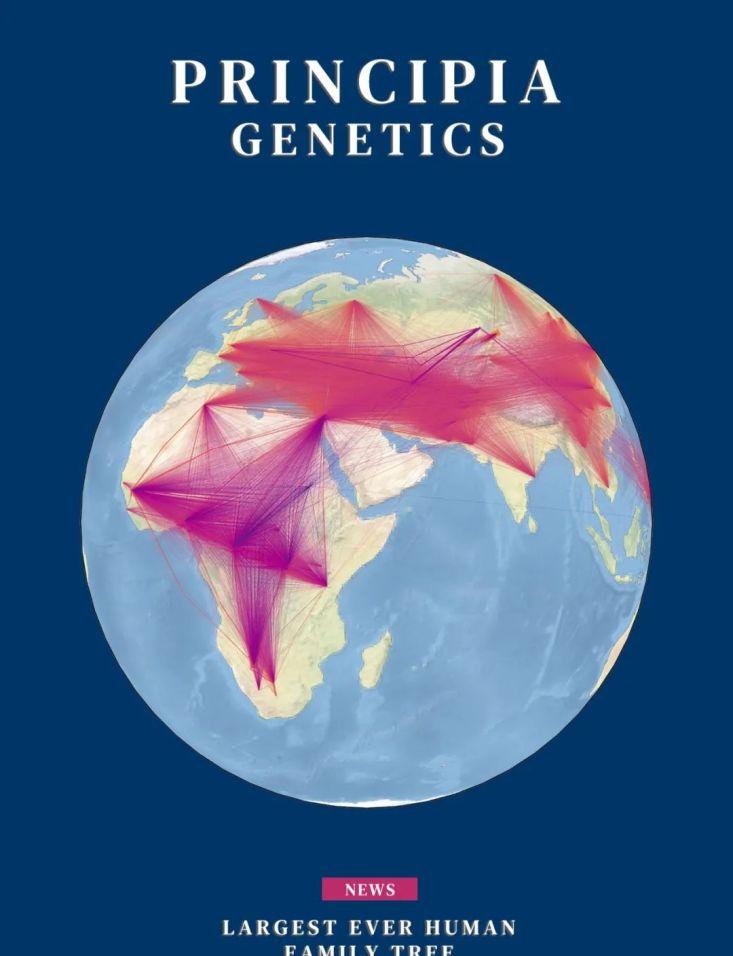
Today, genetic sequencing is nothing new. It costs hundreds or thousands of dollars to sequence all of your DNA, it will reveal your unique genetic makeup, and it can also calculate the similarities and differences between you and others around the world at the genetic level.
Over the past few decades, remarkable progress has been made in human genetic research, with scientists not only having genomic data for hundreds of thousands of people, but even accessing a lot of genetic information about prehistoric humans. An exciting possibility arises, and we now have the ability to trace the origins of human genetic diversity to get a complete map of how individuals around the world relate to each other. In other words, we can find out the genetic lineage that is relevant to all of us.
This obviously doesn't sound like a simple task. But now, a team of researchers has taken a big step. They developed a series of ingenious computer algorithms that integrated genetic similarities and differences in various datasets and accurately reconstructed their associations, resulting in a huge tree of evolutionary systems that unraveled the great history of humanity written in our genes. The paper was recently published in the journal Science.
Unify the modern and ancient genomes
In the new study, the team used newly developed algorithms to describe recent evolutionary stories of 215 human groups from different times and geographic locations.
This lineage, the lineage of our common ancestors, includes 3601 individual genomes from three separate datasets, as well as 8 high-quality ancient genomes. The ancient genomes come from three Neanderthals (an extinct human subspecies that lived in Eurasia until about 40,000 years ago), a Denisovan (another human subspecies found in a skeletal fragment in a Siberian cave), and a family of four from the Avanashev culture who lived in southern Siberia 4,500 years ago.
Visualize inferred changes in human ancestral lineages over time and space. Each line represents an ancestor-descendant relationship in the inferred modern and ancient genomic lineages. The width of the line corresponds to the number of times the relationship is observed, and the color of the line is determined based on the estimated age of the ancestors. | Image credit: Wohns. A. W. et al. (2022)
This unified lineage, or tree of evolutionary systems, explains the genetic relationships of these thousands of genomes to each other. It is also the largest evolutionary system tree reconstructed to date. Strictly speaking, of course, it is not "a tree", but a series of interconnected trees along the genome, which can be called "tree sequences" or "ancestor recombination maps", which contain 13 million evolutionary system trees.
At the same time, this information also involves 27 million common ancestors. For each ancestor, the study estimated their time and geographic location. This could shed light on the possible migration of people around the world, even as far back as the African origins of humans hundreds of thousands of years ago.
The researchers believe that this study provides a basic framework for us to understand the relationship between humans and each other. For example, the information could shed light on the links between African populations and people outside Africa, and see the so-called "out of Africa" event, the impact of human migration from Africa to Eurasia.
Dynamic visualization of human migration. | Video source: Oxford
Similarly, comparing Denisovans with various population groups reveals that they mated with the ancestors of Papua and Australian Aboriginal peoples, consistent with other findings and providing richer information for studying the history of ancient humans.
While there are still populations that lack very accurate information, such as the population of the Americas, some of the findings that are self-explanatory can still be found. These results suggest that humans arrived in the Americas and Oceania earlier than the archaeological evidence currently known.
In particular, the researchers mentioned that their method has many benefits, one of which is that it makes almost no assumptions. For example, the study did not assume whether "out of Africa" happened just once or several times, nor did it dictate that it had to happen in some way at some time. The ultimate goal of the study is, through genealogy, to let the data speak for itself.
Everyone's ancestors
Your genome actually describes how you and others inherit different parts of the genome from different ancestors. If we can understand this lineage, decipher where and when those ancestors lived, we can uncover all the history written in our genes, how our ancestors migrated around the world, and the evolutionary processes that created us all.
It can also serve as background material for analyzing the human genome, such as tracking the origin and spread of a mutation in a disease-causing gene.
In the near future, with your genetic information, you should be able to figure out your place in the "unified family tree" of humanity in a matter of minutes. Of course, you won't be in just one place, because different parts of your DNA may come from very different ancestors, and they may have lived in all corners of the world.
As more genomes are incorporated into the family tree, it can be made more comprehensive. This is not only good for human beings. There are also many biological studies that need to understand how individual populations change in time and space, all of which can be done by creating similar genetic lineages. Lineage is the basis of the genetics of every living species. We now have the tools to pierce the veil and glimpse the secrets inside.
#创作团队:
Compile: M ka
Typography: Wenwen
#参考来源:
https://theconversation.com/were-analysing-dna-from-ancient-and-modern-humans-to-create-a-family-tree-of-everyone-177603
https://www.ox.ac.uk/news/2022-02-25-university-oxford-researchers-create-largest-ever-human-family-tree
https://www.youtube.com/watch?v=Cwj0DRUrKXw&t=10s
#图片来源:
Cover image: pixabay
首图:Wohns, A. W. et al. / Science (2022)